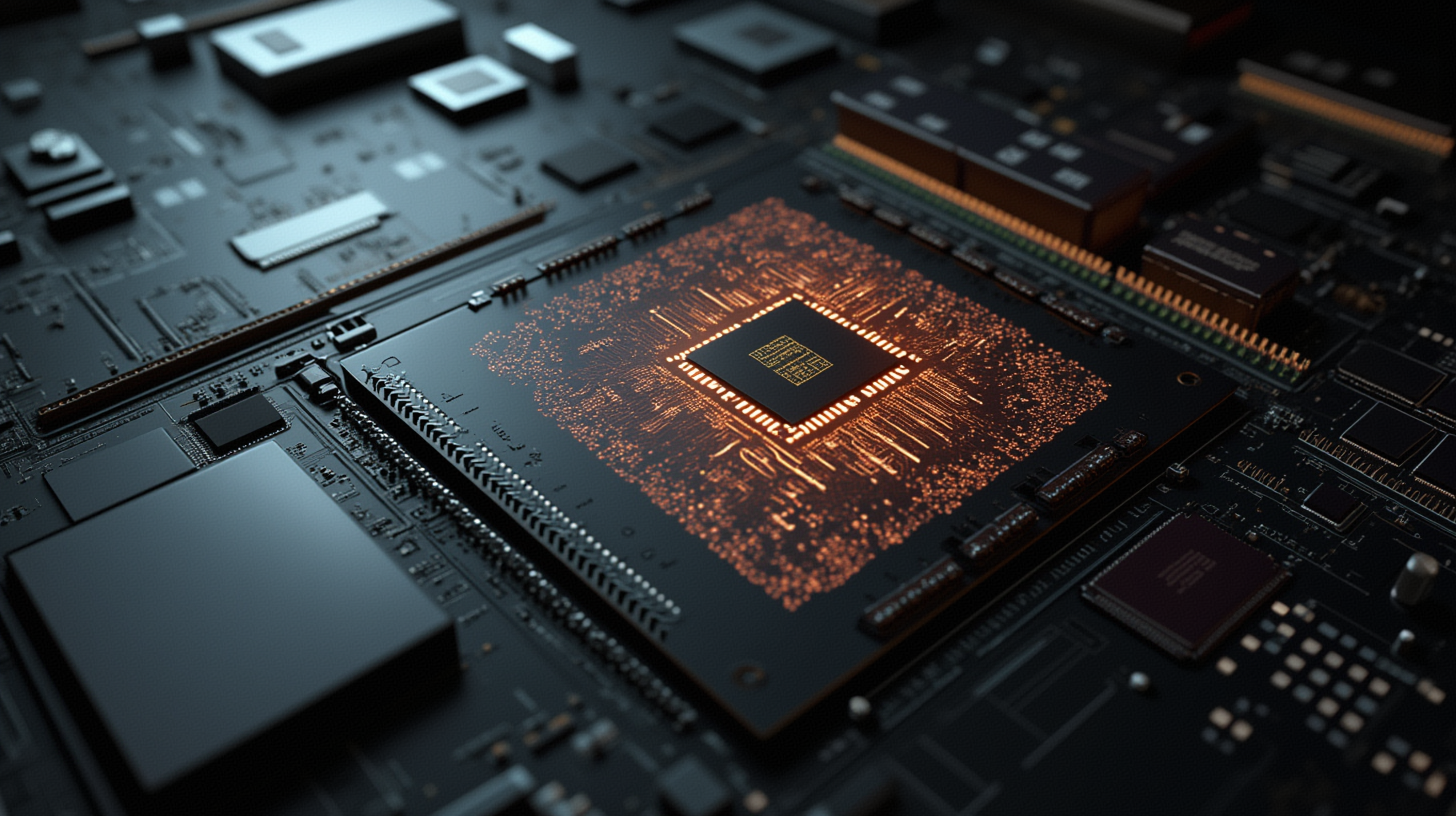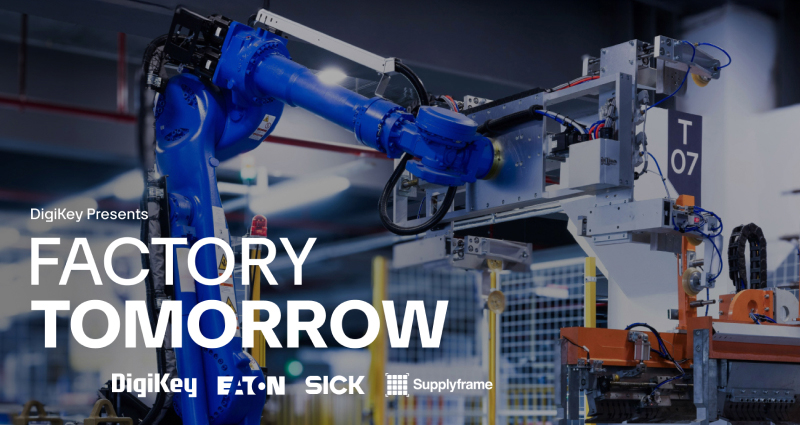发布时间:2025-05-26 阅读量:791 来源: 我爱方案网 作者: Marc Dupaquier,意法半导体人工智能解决方案 总经理
AI continues to spark debate and demonstrate remarkable value for businesses and consumers. As with many emerging technologies, the spotlight often falls on large-scale, infrastructure-heavy, and power-hungry applications. However, as the use of AI grows, there is mounting pressure on the grid from large data centers, with intensive applications becoming much less sustainable and affordable.
随着人工智能的不断发展,其争议性也越来越大;而在企业和消费者的眼中,人工智能价值显著。如同许多新兴科技一样,目前人工智能的应用主要聚焦于大规模、基础设施密集且高功耗的领域。然而,随着人工智能应用的高速发展,大型数据中心给电网带来的压力日益增大,高度密集型应用的可持续性和经济性也在大幅下降。
As a result, there is a soaring demand for nimbler, product-centric AI solutions. Edge AI is leading this new trend, by bringing data processing closer to (or embedded within) devices, on the tiny edge, meaning that basic inference tasks can be performed locally. By not sending raw data off to the cloud via data centers, we are seeing significant security improvements in industrial and consumer applications of AI, which also enhances the performance and efficiency of devices at a fraction of the cost compared to cloud.
因此,市场对更灵活、以产品为导向的人工智能解决方案的需求不断飙升,如何将数据处理功能移到微型边缘设备附近或内部的边缘人工智能正成为新趋势。换句话说,边缘人工智能就是在本地设备上执行基本的推理任务,无需把原始数据发送到数据中心和云计算服务器。目前,工业和消费应用的安全性得到了显著改善,同时边缘人工智能还提升了设备的性能和能效,而成本仅为云端人工智能的几分之一。
But, as with any new opportunity, there are fresh challenges. Product developers must now consider how to build the right infrastructure and the required expertise to capitalize on the potential of edge.
但是,如同任何新机遇一样,边缘人工智能也带来了新的挑战。现在,为了充分发挥边缘人工智能的潜力,产品开发人员必须考虑如何构建正确的基础设施,并积累所需的专业知识。
The importance of local inference
在本地设备上推理的重要性
Taking a step back, we can see that AI largely encompasses two fields: machine learning, where systems learn from data, and neural network computation, a specific model designed to think like a human brain. These are supplementary ways to program machines, training them to do a task by feeding it with relevant data to ensure outputs are accurate and reliable. These workloads are typically carried out at a huge scale, with comprehensive data center installations to make them function.
人工智能大体上分为机器学习和神经网络计算两大领域,机器学习是系统从数据中学习的过程,神经网络是模拟人脑思维的特定神经网络模型。这两种人工智能技术都是补充性计算机编程方法,通过向计算机输入相关数据,训练机器执行一项任务,确保输出结果准确可靠。这些计算任务通常规模很大,需要建设大型数据中心才能保证人工智能正常运行。
For smaller industrial use-cases and consumer industrial applications – whether this is a smart toaster in your kitchen or an autonomous robot on a factory floor – it is not economically (or environmentally) feasible to push the required data and analysis for AI inference to the cloud.
至于较小的工业设备和消费类产品,无论是智能烤箱,工业机器人,还是在云端进行数据分析和人工智能推理等,从经济或环保的角度来看都缺乏可行性。
Instead, with edge AI presenting the opportunity of local inference, ultra-low latency, and smaller transmission loads, we can realize massive improvements to cost and power efficiency, while building new AI applications. We are already seeing edge AI contribute towards significant productivity improvements for smart buildings, asset tracking, and industrial applications. For example, industrial sensors can be accelerated with edge AI hardware for quicker fault detection, as well as predictive maintenance capabilities, to know when a device’s condition will change before a fault occurs.
相反,边缘人工智能让我们看到了本地推理、缩短延迟和降低传输负载的机会。在开发新的人工智能应用时,可以大幅提高成本和能效。我们已经注意到,边缘人工智能有助于提升智能建筑、资产跟踪和工业应用的生产效率。例如,通过边缘人工智能硬件可以加快工业传感器的处理速度,更快地发现故障,并实现预测性维护,提前发现设备工况变化。
Taking this further, the next generation of hardware products designed for edge AI will introduce specific adaptations for AI sub-systems to be part of the security architecture from the start. This is one area in which embedding the edge AI capability within systems comes to the fore.
此外,下一代边缘智能硬件将从一开始就会引入特定的适配技术,让人工智能子系统成为安全架构的一部分,在系统内部嵌入边缘人工智能将引起广泛关注。
Embedding intelligence into the product
在产品内嵌入智能
The next stage in the evolution of embedded systems is introducing edge AI into the device architecture, and from there its “tiny edge”. This refers to tiny, resource-constrained devices that process AI and ML models directly on the edge, including microcontrollers, low-power processors and embedded sensors, enabling real-time data processing with minimal power consumption and low latency.
嵌入式系统的下一个发展阶段是在设备架构内引入边缘人工智能技术,这些设备从此叫做“微型边缘”,即直接在网络边缘上处理人工智能模型和机器学习算法的资源有限的微型设备,包括微控制器、低功耗处理器和嵌入式传感器,能够实时处理数据,并且功耗很小,延迟很低。
A new class of software and hardware is now emerging on the tiny edge, giving the possibility to execute AI operations in the device. By embedding this capability within the architecture from the start, we are making the ‘signal’ itself become the data’, rather than wasting resources transforming it. For example, tiny edge sensors can gather data from the environment that a device is in, leveraging an in-chip engine to produce a result. In the case of solar farms, sensors within a solar panel can specifically detect nearby arc faults across power management systems. When extreme voltages occur, it can automatically trigger a shutdown failsafe and avoid an electrical fire.
现在,在卫星边缘设备上出现一种新型软硬件,为在这些设备上执行人工智能运算提供了可能。通过从设计一开始就将这种处理能力嵌入到设备架构内,我们正在将“信号”转化成“数据”,而不再需要浪费资源转换信号。例如,微型边缘传感器可以收集周边环境数据,利用片内引擎输出处理结果。在太阳能发电厂情景中,太阳能电池板内的传感器可以检测电源管理系统附近的电弧故障。当出现极端电压时,传感器就可以自动触发关机故障保护,避免电气火灾发生。
With applications like arc fault detection as well as battery management or on-device face or object recognition driving growth in this space, we will see the market for microcontrollers capable of supporting AI on the tiny edge grow at a CAGR of over 100% (according to ABI Research). To realize this potential, more work is needed to bridge the gap between the processing capabilities of cloud-based AI and targeted applications from devices that are capable of working on, or being, the edge.
根据 ABI Research的市场分析,随着电弧故障检测、电池管理或设备内置人脸或物体识别等应用成为这一领域的增长点,让微小边缘能够执行人工智能的微控制器将实现高于100% 的复合年增长率。要想释放这一巨大增长潜力,需要下更大的功夫来缩小云端人工智能与边缘设备之间的处理能力差距。
However, like with any new technology: where there is a demand, there is a way.
就像任何新技术一样,只要有需求,就有满足需求的办法。
We are already seeing meaningful R&D results focused on this challenge, and tiny AI is starting to become embedded in all types of different systems – in some cases, consumers are already taking this technology for granted, literally talking to devices without thinking ‘this is AI’.
我们已经看到了针对这一挑战的有意义的研发成果,微型人工智能开始嵌入到各种不同类型的系统中,在某些情况下,消费者已经将这项技术视为理所当然,在与设备语音交互时,他们根本就没想过“他们正在用人工智能”。
Building edge AI infrastructure
构建边缘人工智能基础设施
To capitalize on this emerging opportunity, product developers must first consider the quality and type of data that goes into edge devices, as this determines the level of processing, and the software and hardware required to deal with the workload. This is the key difference between typical edge AI, operating on more powerful hardware, capable of handling complex algorithms and datasets, and tiny AI, which focuses on running lightweight models that can perform basic inference tasks.
为了利用这一新兴机会,产品开发人员必须首先考虑边缘设备输入数据的质量和类型,因为这两个因素决定了处理水平以及所需的软硬件,这是普通边缘人工智能与微型人工智能的主要区别,前者运行在算力更强的硬件上,能够处理复杂的算法和数据集,而后者主要用于运行轻量级神经网络模型,执行基本的推理任务。
For example, audio and visual information - especially visual - are extremely complex and need a deep neural architecture to analyze the data. On the other hand, it is less demanding to process data from vibrations or electric current measurements recorded over time, so developers can utilize tiny AI algorithms to do this within a resource-constrained or ultra-low power, low latency device.
例如,音频和视觉信息,尤其是视觉信息,极其复杂,分析视觉数据需要深度神经架构。另一方面,处理长期记录的振动数据或电流测量数据对神经网络模型要求较低,因此,开发人员可以在资源受限或超低功耗的低延迟设备上利用微型人工智能算法分析这类数据。
It is important to consider the class of device and microcontroller unit needed in the development stage, based on the specific computational power requirements. In many cases, less is more, and running a lighter, tiny AI model improves the power efficiency and battery life of a device. With that said, whether dealing with text or audio-visual information, developers must still undertake pre-processing, feeding large quantities of sample data into learning algorithms to train the AI using them.
在产品开发阶段,产品选型也非常重要,必须根据算力具体要求选择所需的设备和微控制器。在许多情况下,少即是多,运行更轻、更微型的人工智能模型可以提高设备的能效和电池续航时间。话虽如此,无论是处理文本还是视听信息,开发人员仍然必须进行预处理,将大量样本数据输入学习算法,以便训练人工智能模型。
What’s on the horizon?
未来前景
The development of devices that embed AI into the tiny edge is still in its infancy, meaning there’s scope for businesses to experiment, be creative, and figure out exactly what their success factors are. We are at the beginning of a massive wave, which will accelerate digitalization in every aspect of our life.
嵌入式人工智能微型边缘设备发展仍处于起步阶段,这意味着企业有机会探索实验,发挥创造力,确定成功要素。我们正处于一个巨大浪潮的开端,这将全面加快人类生活数字化进程。
The use-cases are vast, from intelligent public infrastructure, such as the sensors required for smart, connected cities, to remote patient monitoring through non-invasive wearables in healthcare. Users are able to improve their lives, and ease daily tasks, without even realizing that AI is the key factor.
从智慧城市传感器等智能公共基础设施,到远程患者监护医疗系统的非创伤式可穿戴设备,微型人工智能具有广阔的应用前景,让用户能够改善生活方式,简化日常工作生活管理,甚至没有意识到人工智能的存在。
The demand is there, with edge AI and tiny AI already transforming product development, redefining what’s classified as a great piece of technology, enabling more personalized predictive features, security, and contextual awareness. In just a few years, this type of AI is going to become vital to the everyday utility of most technologies – without it, developers will quickly see their innovations become obsolete.
需求是存在的,因为边缘人工智能和微型人工智能已经改变了产品开发模式,重新定义了什么才算是伟大的技术,实现了更加个性化的预测、安全性和情境感知功能。在今后几年,这种类型的 人工智能将成为大多数日用产品的关键 ,如果没有人工智能,开发人员很快就会发现自己的创新已经过时。
This is an important step forward, but it doesn’t come without challenges. Overcoming these challenges can only happen through a broader ecosystem of development tools, and software resources. It’s just a matter of time. The tiny edge is the lynchpin through which society will unlock far greater control and usefulness of its data and environment, leading to a smarter AI-driven future.
人工智能一项重大进步,但并非没有挑战。只有建立更大的生态圈,提供丰富的开发工具和软件资源,才能克服这些挑战。这只是时间问题。微型边缘人工智能是人类社会解锁更大的数据和环境控制权以及数据的实用价值的关键,最终实现更智能的AI驱动的未来。

英伟达否认H100和H200售罄传闻

红外传感器是一种利用红外线进行检测的电子设备,广泛应用于工业自动化,安防监控,智能家居,医疗设备等领域

随着全球制造业迈向集成化与数字化,独立机器人单元正逐渐融入更广泛的自动化系统。DigiKey 本季发布的《机器人技术探秘》的第 5 季《未来工厂》视频系列,联合行业领先企业 Eaton 和 SICK,系统解析了从电气控制、传感技术到数据互联等多个层面的前沿解决方案。新一季邀请了多名专家,一起探讨支撑现代机器人制造与自动化的基础设施与创新技术。

SEMI-e深圳国际半导体展暨2025集成电路产业创新展将于2025年9月10日至12日在深圳国际会展中心(宝安新馆)隆重开幕。本届展会由CIOE中国光博会与集成电路创新联盟联合主办,中新材会展与爱集微共同承办,以“IC设计与应用”、“IC制造与供应链”及“化合物半导体”为核心主题,系统覆盖集成电路全产业链环节。

在AIoT技术加速赋能全球数字化转型、中国持续引领物联网产业创新的大背景下,IOTE 2025第24届国际物联网展·深圳站于8月29日在深圳会展中心(宝安新馆)圆满落幕。本届展会以“生态智能·物联全球”为主题,联合AGIC人工智能展与ISVE智慧商显展,汇聚1001家产业链企业,覆盖8万平方米展区,三日内吸引观众超11万人次,其中海外专业买家达5723人,来自30多个国家和地区,充分彰显了展会的国际影响力与行业凝聚力。